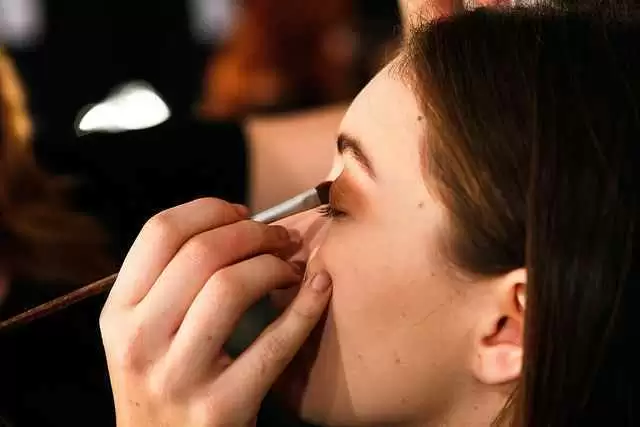
Celiac.com 12/21/2017 - After a lot of trial and error we celiacs learn, often the hard way, to eliminate foods that are poisonous to our bodies. Sadly, we often forget about what "goes onto" our skin. Since the skin is the living outer layer of our bodies it absorbs not only water and oils, it also absorbs cosmetics that can be poisonous to our celiac bodies, most specifically those of us afflicted with dermatitis herpetiformis (often called celiac disease of the Skin). Men, before you set this article aside, thinking it's only for women and you are exempt, please read on. One of 133 Americans has a wheat-related allergy according to CNN.com. We have a tendency not to group toothpaste and lip-glosses with cosmetics, and we usually ignore vitamins and medications when researching celiac disease and dermatitis herpetiformis. We forget to ask our hairdresser what products they are using and whether they contain wheat or gluten, and glibly apply night creams (to absorb into our skin as we sleep) and mud packs that promise similar benefits.
Inquiring into the gluten content of cosmetics, I contacted more than twenty leading companies, then I waited. I was discouraged, particularly by the blatant rudeness of some of the responses I received. Meanwhile, I had to learn whether gluten could be absorbed through the skin.
Celiac.com Sponsor (A12):
Some websites answered that question with a direct "no". Even some physicians responded saying "no". However, since the skin is the largest living organ in the body and it does absorb various oils and emollients, listing gluten-containing components of medicinal and non-medicinal ingredients allows consumers with celiac disease (celiac disease) or wheat allergies to make informed choices when purchasing and/or consuming natural health products. It enables them to avoid gluten in quantities that may trigger adverse reactions.
There are numerous articles on dermatitis herpetiformis and celiac disease making claims so contradictory that it is no wonder we are confused. And I'm not talking about accidental ingestion of gluten. Some such articles claim that trace amounts of gluten One article insists that the skin is not going to absorb gluten, even though our skin is a living organism that can absorb suntan lotions, trans-dermal drugs, etc. It is so susceptible to absorption that when you place a slice of onion in your sock you will taste it in your mouth the following day. How can these websites make such contrary claims? The skin absorbs flavors as well as creams containing gluten.
On the other hand, "Glutino" had an article on record, written on September 14, 2010, regarding "Hidden Gluten in Health and Beauty Products". It states that if you apply hand lotion that contains gluten and then prepare food you are exposing yourself to accidental ingestion and your food to cross contamination. They suggest a site called: naturallydahling.com, a site that lists gluten-containing ingredients commonly used in cosmetics.
Research proving the full extent of how much your skin absorbs is still unavailable, but to those who believe that "what goes on, goes in", the cosmetic industry is full of unknowns. The size of gluten molecules suggests that they may not be able to pass through the skin, but chemicals and technology designed to enhance skin absorption are already present, if not prevalent, in the cosmetic industry. These chemicals are potentially dangerous and often go untested for negative health effects, yet are widespread in lotions, antiperspirants, perfumes and the "Great Mother Market" anti-wrinkle cosmetics.
Since the cosmetic industry is self-regulated it is more important than ever to carefully read labels and use natural or organic products whenever possible. If you find yourself reacting to a particular cosmetic, it is possible that you may have an increased sensitivity to gluten, an allergy or even dermatitis herpetiformis.
But wait a minute! Aren't we told that gluten cannot pass through the skin? I suffered terribly from the use of an "Anti-Frizz" product for my hair that caused a massive outbreak of dermatitis herpetiformis. I should have read the label all the way down to the end. I would have found, in very small print, "wheat germ oil". When researching for this article, I wrote to the company and mentioned my problems with their product. I received an apology and a sample of their "new and improved" "Frizz-Ease" product. They obviously do not know their own products and the fancy names they use are as confusing to them as they are to me. The "new and improved" product contained Avena Sativa, the Latin name for OAT.
I was also told that I likely just had "hives" on the back of my scalp, as oats are still somewhat controversial. Some research suggests that oats in themselves are gluten free, but that they are virtually always contaminated with other grains during cultivation, harvest, distribution or processing. Recent research indicates that a protein naturally found in oats (avenin) contains peptide sequences closely resembling some peptides from wheat gluten. The oat peptides caused mucosal inflammation in significant numbers of celiac disease sufferers. Some examination results show that even oats that are not contaminated with wheat particles may be dangerous.
Again, I was told not to introduce oats into my diet, or use oatmeal as a facial mask until I had been free of a dermatitis herpetaformis outbreak for at least a year. Thus far I have not been able to get relief for that long. It seems the celiac or those who suffer from dermatitis herpetiformis {and let's face it, most people suffering from dermatitis herpetaformis have celiac disease} have to apply the rule of "caveat emptor" - Let the buyer beware.
Tolerance to gluten varies among individuals with celiac disease and there are limited clinical scientific data on a threshold for the amount of gluten required to initiate or maintain an immunological reaction in celiac disease patients. "Therefore there is no clear consensus on a safe gluten threshold level." The Dermatologist I see at The University of British Columbia Hospital has told me to tell people in restaurants that gluten is poison to my system and I can become very ill from ingesting gluten. They are a little more careful before telling me a dish is gluten free, and hopefully through education the cosmetic industry is going to improve its testing and cease glibly stating things as "fact" when they simply do not know.
Industries that produce over-the-counter medications and vitamin supplement, especially those that may contain gluten as a binding agent, should also be scrutinized. We have come a long way, but large challenges are still ahead. One of our biggest challenges is reading the labels on these products. One almost needs to carry a magnifying glass when shopping.
Cosmetics, which include hair products, soaps, perfumes and toothpastes also run us into problems, often big, "itchy" problems. The male celiac/dermatitis herpetaformis experience can also include outbreaks from any product that comes into contact with the skin and particularly those that "stay" on the hair or skin. Who would have known that sun tan lotions could contain wheat germ oil? It is difficult enough to eliminate words such as "triticum vulgare" the Latin name of wheat or "wheat germ" containing ingredients!
In preparation for this article, I contacted the following companies:
Avon, Clairol, Clarins, Clinique, Coty, Covergirl, Estee Lauder, Garnier, John Frieda, John Paul Mitchell, L'Oreal, Mabelline, Marcelle, Neutrogena, Olay, Pantene, Revlon, and companies that go under general all-encompassing headings such as "Life Brand". This can be a daunting task, and "gluten free" and "wheat free" are not the same thing.
Some of the things that I learned in this rather massive undertaking include the rule of "Pac Man". Companies are sometimes taken over by bigger companies and when this occurs their rules change. A company that at one time did not test on animals or use machines that were cleaned prior to using products claiming to be gluten free are now glibly adopting the "new bigger and better". I was shocked to find out that some of the containers from the smaller company were still being used after these PAC MAN take-overs, to save on manufacturing costs.
And, remember, once several ingredients are combined the "organic" ingredient probably ceases to be "organic". Some women (and men, you are not exempt here) expect to pay a higher price for a luxury brand assuming that the gorgeous bottle of eye cream sold at Saks for $60.00 is going to work better than the $1.99 tube on the clearance rack of a local store. Just ensure the product has not reached its "sell by" date because it may all be psychological. What you have to concern yourself about, as a celiac patient or a person with dermatitis herpetiformis, is whether there is gluten or wheat in that product.
Before you splurge on an expensive product take the time to compare it to a similar product from one of their sister brands. Usually an online store (like Drugstore.com) will list the ingredients. Or you can check on a site like "Makeup Alley" which is a great resource, offering numerous reviews and you can ask questions of the extremely knowledgeable posters on this message board.
Another great resource is a large paperback book, titled "Do not go to the Drugstore Without Me" written by Paula Begoin. When I purchased the books in 2001 it was in its 5th Edition. NB: This is not a book specifically for celiac disease or dermatitis herpetiformis, but it was in this book that I found out about "Glutamic Acid". It is derived from wheat gluten and is an amino acid that can have water binding properties for the skin. It also explains glycerylesters that form a vast group of ingredients that are a mixture of fatty acids, sugars, and non-volatile alcohols. These fats and oils are used in cosmetics as emollients and lubricants as well as binding and thickening agents. At the back of this book is a list of the companies that do not test on animals and those that do, but again, the PAC MAN Rule applies.
I purchased the book for myself, my daughter, and daughter-in-law, specifically because when my daughter was in her twenties she seemed to think she simply must buy her shampoo from the hairdresser because only $45.00 shampoo was good enough for her hair. It was a big eye opener when she moved out of home and had to purchase it herself!
I believe that the more we know about beauty products and the beauty industry the wiser our purchases will be. Consider, for instance, the cost of research and development for say, L'Oreal who develop formulas that can be used in Garnier Shampoos ($3.99) and Kerastase shampoo ($29.99) It doesn't take long to realize that it is a good idea to compare products at different ends of the price scale. Sometimes, two products from two different brands will have the same patent number. The difference is in the non-active ingredients, which give it a unique texture, scent and/or color.
Also, it is wise to photo-copy, and even apply plastic covering to lists of "safe" beauty products, just as it is wise to keep a copy of "safe" and "unsafe" foods on hand when you go shopping. When you cannot even pronounce some of the words used in foods and beauty products how can you be expected to remember what is safe to apply to your hair and skin?
I received a very nice letter from Teresa Menna, Manager at L'Oreal in Quebec who told me that L'Oreal has abolished gluten in the composition of L'Oreal products. However, on reading more literature I find that Garnier is a mass market cosmetic brand of L'Oreal, and L'Oreal is part of the Group P&G. P&G stands for Proctor and Gamble and P&G Beauty brands can be found on the site:_ http://pgbeautygroomingscience.com/product.php {The Company Garnier Laboratories was started in 1906 and acquired by L'Oreal in the 1970's}. I was unaware prior to researching this article that L'Oreal owned Kerastase, or that L'Oreal had purchased the MAC Cosmetic line, or that the KAO Brands Company owns Ban, Biore, Jergens and John Frieda.
Here are some of the ingredients you might find in cosmetics that could indicate wheat or gluten:
- Avena Sativa {Latin name of oat, or "oat" term containing ingredients
- Hordeum distichon {Latin name of barley, or "barley" term containing ingredients}
- Hydrolyzed malt extract
- Hydrolyzed wheat protein
- Hydrolyzed vegetable protein
- Wheat germ
- Vitamin E
- Cyclodextrin
- Barley extract
- Fermented grain extract
- Oat (Avena sativa)
- Samino peptide complex
- Secale Cereale (Latin name of rye, or "rye" term containing ingredients)
- Stearyldimoniumhydroxypropyl
- Phytosphingosine extract
- Triticum vulgare {Latin name of wheat, or "wheat" term containing ingredients}
- Dextrin
- Dextrin palmitate
- Maltodextrin
- Sodium C8-16 Isoalkylsuccinyl Wheat Protein Sulfonate
- Yeast extract
- Anything with wheat in the name
Thoughts:
Some cute person gave the warning to ensure your lipstick is gluten free even if you don't have any skin issues. You could swallow some lipstick and get gluten in your system!
Another person adds at the bottom of their e-mail to be sure to check guidelines regularly because company policies can change yearly and the list is only to be considered as "guidelines" and make-up ingredients can change each time a company changes or the scientists within that company decide to add to or delete certain products. {Makes you feel very safe as a celiac/dermatitis herpetaformis person doesn't it?}
Another e-mailer suggested that mascara labeled as a "thickening agent" should be fearfully evaluated by the celiac/dermatitis herpetaformis person because the thickening agent is often "flour" and can sometimes cause eyelashes to fall out! Who knew?
Noted on one e-mail, ‘So-called luxury brands can be laden with synthetic ingredients that do not cost more than their not so luxurious counterparts.
True natural products that do perform, and there are a few such brands on the market, are authentic natural products that actually deliver what they promise and they truly do cost more to make because raw ingredients are much higher in cost. In fact, the cost is significantly higher when pure high grade ingredients are used.
Letter received: " We have compiled a list of gluten free beauty products available on sephora.com. These products do not contain any wheat, rye or barley derivatives, and they were made in gluten-free laboratories so there is no chance of cross-contamination. But since you cannot be too careful, discontinue use of any product that triggers an attack."
Letter received from Clairol:- "Gluten is a protein found in wheat, rye and barley. Although it is not added directly to our product, it may be present in fragrances. Due to the difficulty of tracing the source ingredients for the variety of fragrances used in manufacturing our products, we cannot provide specific levels of gluten content for any of our fragrance blends. Be aware that even products labeled "unscented" will still contain masking scent, therefore they may potentially contain gluten."
Advertisement: World's Top Ten Cosmetic Companies : "Beauty begins on the inside, check out our post on ‘The Top Five Foods for Amazing Skin'" - Posted by The Greenster Team
"I finally got up the nerve to go through my own (their) personal care products and look them up on "SKIN DEEP" and was very disappointed. The Company that makes my mascara (L'Oreal) tests on animals as does the company that makes my eyeliner (Covergirl) and my under eye concealer (Made by Physician's Formula) contains parabens" THE GREENSTER TEAM creates great articles, list the top ten cosmetic companies, what portion of the world's market they share and their hazard range.
Letter received from Mabelline:- "Please find below most ingredients containing gluten (wheat and other grains). We invite you to take this list and compare it to our ingredient listings every time you buy a new product. When in doubt, do not hesitate to do your own research or contact your doctor." {Caveat Emptor}
REMEMBER:- The truth is that there is no such thing as gluten free. The FDA has proposed a less than 20 ppm gluten -free standard in 2006. That was its first attempt to define the term gluten free, but the agency has yet to finalize it. The USDA is awaiting the FDA's decision before moving ahead.
STILL WAITING. With the number of products making unregulated gluten free claims on the rise, the marketplace can be scary for consumers with gluten sensitivity and wheat allergies. Why hasn't the FDA finalized its 2006 definition of gluten free? As part of sweeping legislation known s FALCPA the Food Allergen Labelling and Consumer Protection Act of 2004, Congress ordered the FDA to define and permit the voluntary use of the term gluten free on the labeling of foods by August 2008. As directed, the FDA issued proposed gluten-free regulations on schedule but seems to have failed to follow through with a final ruling. There has been no explanation for the delay. Since the Cosmetic Industry is a self-regulating body it seems {appears, is assumed} that we the consumers are on our own as far as researching what goes on our skin and in our hair, because some of the letters I have received leave it to the celiac or dermatitis herpetiformis sufferer to research their own products.
Even a letter from Avon states:- "Although Avon sells quality products, there is always possibility of contamination during manufacturing or changes/substitutions of ingredients. As with everything related to celiac disease, dermatitis herpetiformis and gluten Intolerance, products, ingredients and preparation may change over time. Your reactions to a specific product, ingredient may be different from the reactions of others. Like eating at a restaurant, you have to make a choice whether to consume/use a product. The list is meant to be a "guide" and does not guarantee that a product is 100% free of gluten. Dacia Lehman, Avon and GIG assume no responsibility for its use and any resulting liability or consequential damages is denied."
LETTER: - Proctor and Gamble "The WHMIS rating is designed to rate raw materials and not formulated products such as ours. Nor are our consumer products required to be labeled under the Occupational Safety and Health Administration (OSHA) Hazard Communication Standard. Thus labelling of our products with WHMIS ratings or any other hazard rating should not be required by any state health and safety regulatory agencies." That letter is signed by Asela for the Pantene Team.
LETTER:- May 2, 2012 - xyz@ca.loreal.com - "We have received your message and we will get back to you as soon as possible.
Web Sites:
- Gluten-free Lifestyle: glutenfree-lifestyle.com (Gives gluten free products by type and by company) i.e.: deodorants, face & body wash, make-up, suntan lotion, toothpaste, moisturizer, lotion, shampoo & conditioner, shave cream, gels, after shave, laundry products, cleaners, soap, etc.
- Beauty Industry: Who Owns What?
- Glutino - Hidden Gluten in Health Products - Glutino & Gluten Free Pantry
Blogs:
- www.gluten-free-cosmetic-counter.org
- Beauty Blogging Junkie
- Ebates Shopping Blog
- In The Makeup
- Lipstick Powder n'Paint
- Shop With a Vengeance
- Smarter Beauty Blog
- The Beauty Brains
- Sephora
- Sephora's iGoogle Beauty Portal
References:
- Codex Standard for Foods for Special Dietary Use for Persons Intolerant to Gluten. Codex STAN 118 - 1979 ROME
- Government of Canada 2008 - Regulations Amending the Food and Drug Regulations (1220-
- Enhanced Labeling for Food Allergen and Gluten Sources and Added Sulphites)
- Health Canada 2007 - celiac disease and the Safety of Oats
- Labeling of Natural Health Products Containing Gluten - Health Canada Notice 2010




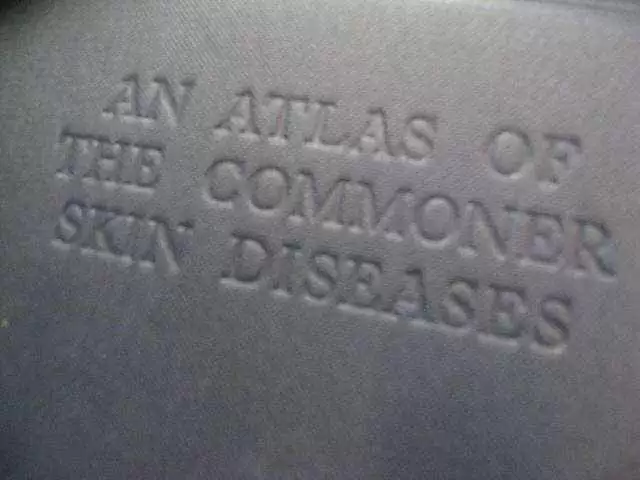

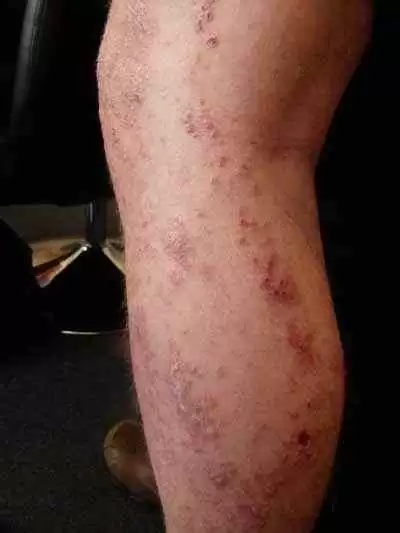

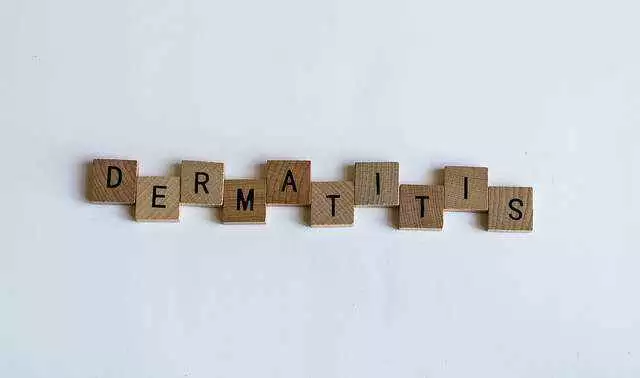
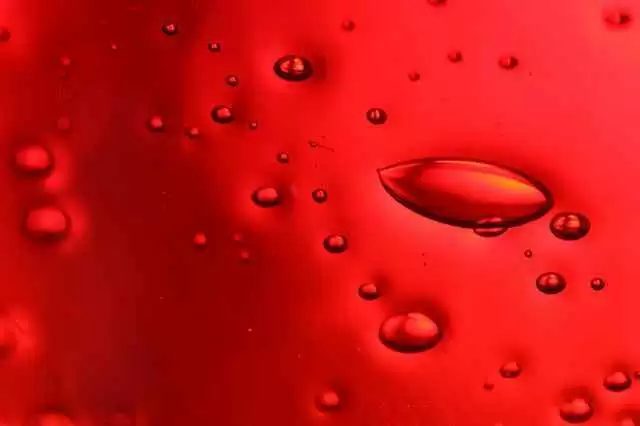



Recommended Comments
Create an account or sign in to comment
You need to be a member in order to leave a comment
Create an account
Sign up for a new account in our community. It's easy!
Register a new accountSign in
Already have an account? Sign in here.
Sign In Now